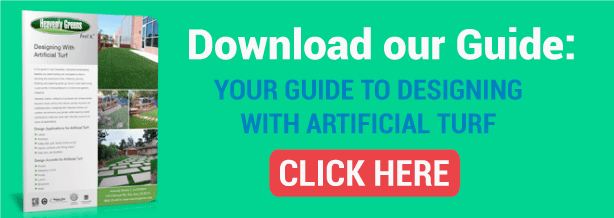
Ever stop and think about how we live in such a dynamic age? Technology is intertwined in our lives, in ways both subtle and profound, and it’s always improving. In less than a decade, we saw the introduction of smartphones, then watched the evolution of apps for smart homes and cars.
Pretty cool, right?
Technology also had made a major impact on artificial grass. Decades ago, AstroTurf, the surface used for the playing field inside the Houston Astrodome, seemed revolutionary. In reality, it was essentially green fabric mounted on a foam backing that neither looked nor felt like the real thing. Athletes described it as playing on painted asphalt!
It didn’t need watering or any of the usual maintenance actual grass requires, but that’s where the comparison to modern faux grass ends.
Now, artificial grass not only resembles natural grass in appearance but is superior in texture and performance. In addition, artificial grass comes with many benefits, from environmental sustainability to enhanced health and safety qualities. Unlike live grass, the manufactured variety is inhospitable to mold and other allergens. Engineered for fast-draining, it does not become slippery when wet. And, when it comes to kid-friendly lawns and yards, you won’t mind your little ones tumbling across the plush, forgiving surface that artificial grass provides.
Artificial grass is so versatile, there are a range of products to choose from for use in and around the home, event venues, and outdoor as well and indoor sports facilities. In fact, artificial grass has become the surface of choice for many professional sports teams, both as a playing surface and for practice fields.
How It’s Made
Artificial turf is made of the same materials that are used to make other durable products, such as carpeting, water pipes, and plastic bottles and toys. These materials are ideal because they have qualities desirable for all those products. They resist bacteria and germs, hold up well to the elements, and don’t wear down with constant use. Strong adhesives are used to hold the faux grass together. While the adhesives don’t break down from heavy use or weather conditions, they are non-threatening to people, pets, or the environment.
As realistic as artificial grass looks and feels, there’s more than meets the eye. Three components – the blades, the backing, and the infill – come together to meet your custom landscaping and multi-use surface needs.
Blades are made from several different materials, depending on your needs. Nylon, the most expensive artificial grass material, is also one of the strongest and produces the stiffest blades. It holds up particularly well under heavy foot traffic. When combined with other materials, it makes a perfect surface for golf and other uses.
Other materials blades are made from include polypropylene and polyethylene – or a combination of the two. Some blades are made of polypropylene, polyethylene, and nylon. Blades come in varying hues and thickness to suit customized needs.
Before your artificial grass is installed, the blades are attached to a mesh backing. This creates the foundation for the blades. Typically, the backing is made from the same material as the blades, or sometimes a blend of polypropylene and polyethylene. The backing is what gives faux grass the fast-draining feature you’re looking for.
Your installer applies the infill after the artificial grass is in place. It is brushed down in between the blades, holding them upright. It adds durability and supports efficient drainage. Serving much like the soil under natural grass, it also helps provide a cushiony feel. Some infill is made from tiny, smooth “pills” of recycled tire rubber, but also can be made of natural sand or silica particles, or a combination of both.
The type of infill depends on the size of the area to be covered and how synthetic grass will be used. For golf courses and putting greens, the infill is usually made from sand. For playgrounds and sports fields, tiny rubber pellets work best. And for lawns and other landscaping around the home, pea gravel is typically the infill of choice.
The materials for infill have different qualities. Crumb rubber is the most cost-effective. It does not deteriorate and won’t rub off on clothing or shoes. Sand and pea gravel cost more but allows for the most realistic-looking surface that feels more like natural grass.
What’s Your Pleasure?
What you use artificial grass for is limited only by your imagination.
It’s perfect for eco-friendly landscaping and because it’s practically maintenance-free, it saves you a lot of time and money. Faux grass doesn’t fade like natural grass and is not susceptible to drought or disease, so it lasts a long time. Besides not needing water, artificial grass is sustainable because it does not require pesticides, fertilizer or any other potentially harmful chemicals that make their way into Bay Area waterways in the runoff after it rains.
Whether you want a beautiful, lush lawn or yard that requires little care, home putting green or any other desire that used to require labor-intensive live grass, artificial grass is the better alternative every time.












